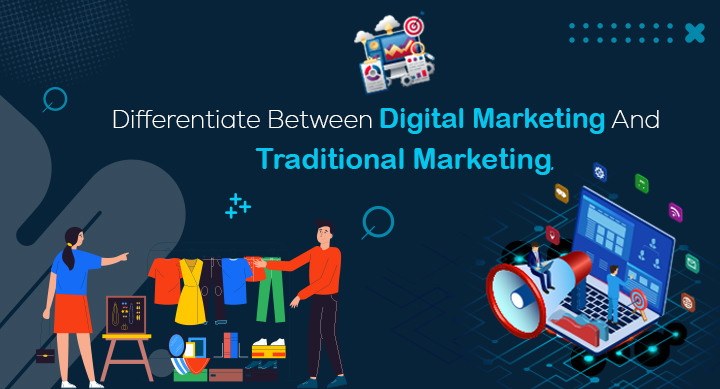
In
the contemporary rapidly evolving commercial enterprise panorama, advertising
and marketing have taken on new dimensions, primarily because of the appearance
of generation and the net. The age-antique techniques of traditional
advertising have been complemented and, in some instances, replaced by the
dynamic realm of virtual advertising. In this blog, we can discover the
distinct attributes of traditional and digital marketing services, assisting you in navigating the various avenues to
promote your commercial enterprise efficiently.
1. Reach and Targeting
Traditional Marketing:
Traditional advertising encompasses methods used for decades, such as print media, television, radio, billboards, and unsolicited mail. While those strategies have a large attain, they need more precision in relation to focusing on unique demographics. Marketers often rely upon assumptions and generalisations about their target audience.
Digital Marketing:
Digital marketing agency exploit the strength of the net and its good-sized array of systems. This form of advertising provides unparalleled concentration on alternatives, allowing businesses to tailor their campaigns to precise demographics, hobbies, behaviours, and places. Techniques like SEO (Search Engine Optimization), social media advertising, and email advertising and marketing allow groups to connect to their best target audience on a much extra private level.
2. Cost Efficiency:
Traditional Marketing Services:
Traditional advertising and marketing methods commonly involve tremendous charges. Printing materials, airing commercials, and renting physical areas for commercials can stress marketing budgets, specifically for small organizations. Measuring the precise impact of those campaigns can also be challenging.
Digital Marketing:
Digital marketing regularly offers a more value-powerful method. Social media campaigns, email newsletters, and online advertising and marketing may be tailored to shape diverse price range sizes. Additionally, the potential to song and examine real-time data permits marketers to optimize campaigns on the go, ensuring that every dollar spent is used efficiently.
3. Engagement and Interaction:
Traditional Marketing:
Traditional advertising is commonly a one-manner verbal exchange channel. While billboards, TV ads, and radio spots can capture attention, they don’t provide a street for immediate interaction or remarks. This limits the intensity of engagement among businesses and their audience.
Digital Marketing:
Digital advertising flourishes on engagement and interplay. Social media systems, blogs, and interactive content permit agencies to foster -mannered conversations with their target market. This engagement no longer best builds stronger relationships but also gives valuable insights into purchaser possibilities and behaviours.
4. Measurement and Analytics:
Traditional Marketing:
Measuring the effect of conventional advertising and marketing efforts may be difficult. While coupon codes and unique smartphone numbers may be used to song responses, it’s regularly tough to exact characteristic sales or conversions to unique campaigns.
Digital Marketing:
One of the principal advantages of virtual advertising is its robust analytics competencies. Marketers can access a wealth of records, including website visitors, click-through quotes, conversion fees, and consumer demographics. This data-pushed approach permits entrepreneurs to make informed decisions, refine strategies, and maximize ROI.
5. Flexibility and Real-time Adjustments:
Traditional Marketing:
Traditional advertising campaigns regularly have an extended making plan and execution timeline. Changes or adjustments to campaigns may also require widespread time and sources.
Digital Marketing:
Digital advertising is especially agile. Campaigns can be launched, adjusted, or halted in real-time. This flexibility lets marketers respond unexpectedly to marketplace tendencies, purchaser comments, or adjustments in business objectives.
Conclusion
While each conventional and virtual advertising has merits, the rise of the virtual age has transformed the marketing panorama. Businesses must cautiously consider their audience, budget, engagement desires, and favoured degree of measurability whilst choosing among these strategies. A balanced blend of both strategies can yield the most effective and comprehensive advertising and marketing strategy.

Quick Links